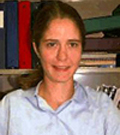High-Skill Immigration: Educational Attainment and Labor Force Participation
John Bound (University of Michigan) and Sarah Turner (University of Virginia)
Immigration in the U.S. is characterized by a “twin peaks” phenomenon, with disproportionately high concentrations of immigrants among very low-skill and very high-skill workers.
According to the 2007 American Community Survey, foreign-born comprise nearly 35.9% of workers with less than a high school degree and 27.7% of workers at the PhD level, with an even higher representation among those in scientific fields (45.2%).
Compared to immigration of low-skill workers, researchers have devoted relatively little formal consideration to how expanded immigration, along with changes in the global supply of workers with science, engineering and medical training affects outcomes in the U.S. high-skill labor market.
Bound and Turner will examine two broad lines of inquiry. First, what are the characteristics and outcomes of high-skill immigrants to the U.S.? The analysis will measure the changes in the distribution of high-skilled immigrants across countries of origin, occupations, gender, and location within the U.S. In addition, the research will examine indicators of assimilation such as persistence in the U.S., marital status and family formation for this population.
The second major line of inquiry is to assess the implications of high-skill immigration for natives. The analysis will examine how immigrants affect wages in U.S. science and engineering labor markets, estimating counterfactual path of wages under different immigration assumptions.
Bound and Turner hypothesize that the increased relative supply of workers with science and engineering expertise from abroad has fundamentally changed the nature of adjustment of high skill labor markets in recent decades. The research will explore whether the increasing international integration of the U.S. science and engineering labor market over the past several decades leads to greater accommodation in the near term to changes in the U.S. labor demand for scientists than in the decades before 1980.
The researchers will draw upon data from the U.S. Census enumerations and the American Community Survey (ACS), particularly the measures of educational attainment, occupation, industry, earnings, citizenship, country of birth and year of immigration.
Additional data will come from the National Survey of College Graduates (1993 and 2003 cohorts), to gauge educational and labor market experiences for college graduates; the Survey of Earned Doctorates, to trace patterns in new doctorate recipients by country of origin and citizenship status. Labor Condition Applications associated with H1-B visas will provide a further indication of flows and expected wages, and administrative data from international sources will help describe the changes in the global supply of high-skill workers.



